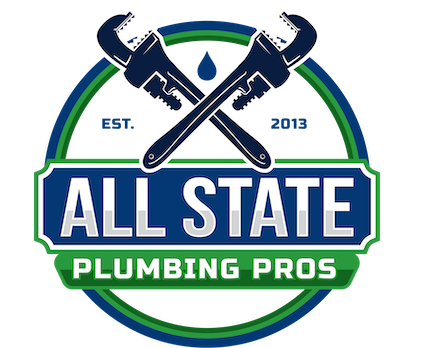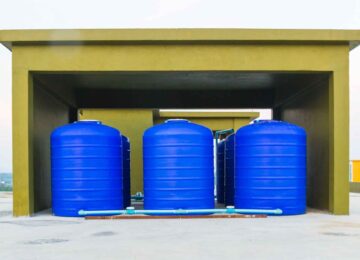For homes that rely on wells for their water supply, the well pump is the heart of the entire system. It pulls water from underground into the pressure tank, delivering steady water pressure and flow to faucets, appliances, and irrigation systems. Like any mechanical equipment, well pumps don’t last forever, and many homeowners ask the same question: how long do well pumps last?
The answer can vary. A well pump’s lifespan depends on factors like water quality, usage frequency, pump type, and ongoing maintenance. On average, well pumps last between 8–15 years, though some may fail sooner, while others last longer under ideal conditions. Knowing the typical lifespan and what affects it can help you plan for timely replacements, prevent premature wear, and keep your water system performing at its best.
Introduction to Well Pumps
Well pumps are essential for delivering a reliable water supply in residential properties. These devices provide the water pressure and flow rate that households depend on every day. There are two main pump types commonly used: submersible pumps, which are installed deep inside the well and push water to the surface, and jet pumps, which are installed above ground and pull water up from shallow or deep wells.
Understanding how a well pump functions is the first step to extending its life. The pump is designed to cycle on and off based on demand, filling the pressure tank with water until the pressure switch signals it to stop. Excessive cycling, low water levels, or improper installation can shorten the pump’s lifespan significantly. Regular maintenance and water quality testing play a vital role in catching problems early and preventing pump failure.
Types of Well Pumps
The type of well pump you have can directly impact how long it lasts. Each pump style functions differently and faces unique wear and tear over time.
- Submersible pumps – Installed inside deep wells, these pumps push water upward and typically last up to 15 years or longer with proper maintenance. Because they are submerged, they operate more efficiently and are less prone to running dry.
- Jet pumps – Often used in shallow wells, jet pumps can be installed above ground or at the well’s head. Their lifespan tends to vary depending on the well depth and usage, but generally falls within the 8–12 year range.
- Centrifugal pumps – Less common in residential use, centrifugal pumps are designed for shallow wells and shorter lifespans due to their limited capacity.
Selecting the right pump type for your well depth and water needs is critical for maximizing its longevity. Consulting with a professional can help determine the best pump for your household.
Factors Affecting Well Pump Lifespan
Several factors can shorten or extend a well pump’s lifespan. Awareness of these issues can help you take preventive measures.
- Water quality: Poor water quality, such as sediment, sand, or corrosive minerals, can cause premature wear on the pump’s components.
- Usage frequency: Pumps that cycle on and off frequently are under more stress, leading to faster wear and failure.
- Environmental conditions: High temperatures, flooding, or high humidity can cause damage to electrical components and seals.
- Maintenance: Neglecting routine inspections or skipping water quality testing can allow small problems to escalate.
Addressing these variables through proper installation, regular maintenance, and water testing will help your pump last longer and avoid costly replacements.
Understanding Pressure Tank Importance
A pressure tank is an often-overlooked part of the well pump system, yet it plays a significant role in how long the pump lasts. The pressure tank stores water under pressure, reducing how often the pump cycles on and off.
A tank that is too small for household water demands can lead to frequent cycling, which wears out the pump’s motor and bearings. Conversely, a properly sized tank allows the pump to run in optimal cycles, extending its lifespan.
Regular testing of the pressure tank can help identify issues like leaks or a failing bladder that could otherwise put extra stress on the pump. Homeowners should schedule periodic inspections to ensure both the pressure tank and pump are functioning correctly.
Maintaining Optimal Performance
Routine maintenance is key to extending a well pump’s lifespan. A well-maintained pump can last several years longer than one that’s neglected.
- Inspect the pump and components: Check the pump’s motor, bearings, and seals for wear.
- Test the pressure switch: A misaligned pressure switch can cause irregular water pressure and unnecessary pump cycling.
- Flush the system: Removing sediment and buildup from pipes can protect the pump from damage.
- Monitor water quality: Regular water testing helps detect contaminants that may erode pump components or clog filters.
By following a consistent maintenance plan and scheduling professional inspections, you can reduce the risk of premature pump failure and maintain healthy water flow.
Signs of a Failing Well Pump
Recognizing the signs of a failing pump can help you act before it completely stops working.
- Unusual noises: Grinding, rattling, or banging sounds often indicate internal damage or debris buildup.
- Low water pressure: A sudden drop in water pressure can signal pump wear, a failing pressure tank, or clogged pipes.
- Frequent cycling: If the pump is turning on and off more often than usual, it may be undersized, or the pressure tank could be failing.
- Increased energy bills: A failing pump may run longer than necessary, using more electricity and reducing efficiency.
If you notice any of these signs, schedule a professional inspection to determine whether repairs or replacement are necessary.
When to Replace a Well Pump
On average, well pumps typically need replacement every 8–15 years, depending on the pump type, usage, and maintenance. Submersible pumps usually last longer than jet pumps because they are better protected from the elements.
Replacing a well pump can be a significant investment, but it also improves water quality, restores optimal water pressure, and reduces energy costs. A new pump also helps safeguard other components of the water system, like the pressure tank and pipes, from damage caused by inconsistent water flow.
When considering a replacement, consult a professional to evaluate your current pump’s performance and determine the most efficient upgrade.
New Well Pump Considerations
If you’re installing a new well pump, it’s important to select the right size and type for your household’s needs.
- Flow rate: The pump should meet the water usage demands of your home, including appliances and irrigation.
- Water pressure: Ensure the pump delivers consistent pressure for comfort and efficiency.
- Cost and energy savings: While a new pump is an investment, energy-efficient models can save on utility bills over time.
Consulting with a professional can help you navigate these considerations and avoid costly mistakes during installation.
Healthy Water Supply
Maintaining a healthy water supply goes hand in hand with pump longevity. Poor water quality can reduce the pump’s lifespan, affect your household’s health, and cause plumbing issues.
Regular water quality testing ensures your well water is free from contaminants and safe to drink. If necessary, install water treatment solutions to remove sediment or harmful minerals. A well-maintained system supports both optimal performance and a clean water supply.
How Many Years Does a Well Pump Last
Most well pumps last 8–15 years, though submersible pumps may last even longer with proper care. Jet pumps, while effective, may require replacement sooner due to their location and design.
Environmental conditions, water quality, and maintenance habits all influence how long a pump lasts. Regular inspections, water testing, and addressing potential issues early can help you get the most out of your pump investment.
Drilling Services
If you’re installing a new pump or replacing an old one, drilling services can help determine the best course of action. These professionals can evaluate your well depth, water table, and soil conditions to ensure the pump and well system are correctly matched.
Regular inspections by drilling service providers can also uncover hidden issues before they lead to pump failure. Their expertise can extend the lifespan of your well and its components.
Conclusion
A well pump is a critical component of your home’s water system, and its lifespan depends on factors like water quality, maintenance, and usage. By understanding how long well pumps last and what influences their longevity, homeowners can plan for replacements, avoid unexpected failures, and enjoy a reliable water supply. Scheduling routine inspections, maintaining the pressure tank, and testing water quality can help extend the life of your pump well beyond the average.
That said, if your well pump is nearing the end of its lifespan or showing signs of failure, it’s time to call in a professional. At All State Plumbing Pros, we’re available 24/7 to help homeowners across Connecticut and New York repair or replace well pumps quickly and safely.
Whether you’re dealing with low water pressure, no water at all, or an outdated pump that needs replacing, contact us today for reliable, expert service.
FAQs
How do I know if my well pump is going bad?
A failing pump may produce unusual noises, low water pressure, or frequent cycling. You might also see higher energy bills as the pump works harder to maintain water flow. Scheduling an inspection when you notice these signs can prevent a complete failure.
How much should it cost to replace a well pump?
The cost of replacing a well pump depends on the pump type and well depth. On average, replacement can range from $900–$2,500, including labor and equipment. Submersible pumps for deep wells typically cost more than jet pumps for shallow wells.
What is the typical lifespan of a well pump?
Most well pumps last between 8–15 years, though submersible pumps can last longer with proper maintenance. Usage habits, water quality, and environmental conditions also affect lifespan.
Do well pumps burn out?
Yes, well pumps can burn out if they run dry, cycle excessively, or experience electrical issues. Ensuring your pressure tank is correctly sized and monitoring water levels can reduce the risk of burnout.

![How Long Do Well Pumps Last? Lifespan & Maintenance Tips For homes that rely on wells for their water supply, the well pump is the heart of the entire system. It pulls water from underground into the pressure tank, delivering steady water pressure and flow to faucets, appliances, and irrigation systems. Like any mechanical equipment, well pumps don’t last forever, and many homeowners ask the […]](https://allstateplumbingct.com/wp-content/uploads/2025/08/How-Long-Do-Well-Pumps-Last-Lifespan-Maintenance-Tips-750x420.jpg)



Leave a Reply